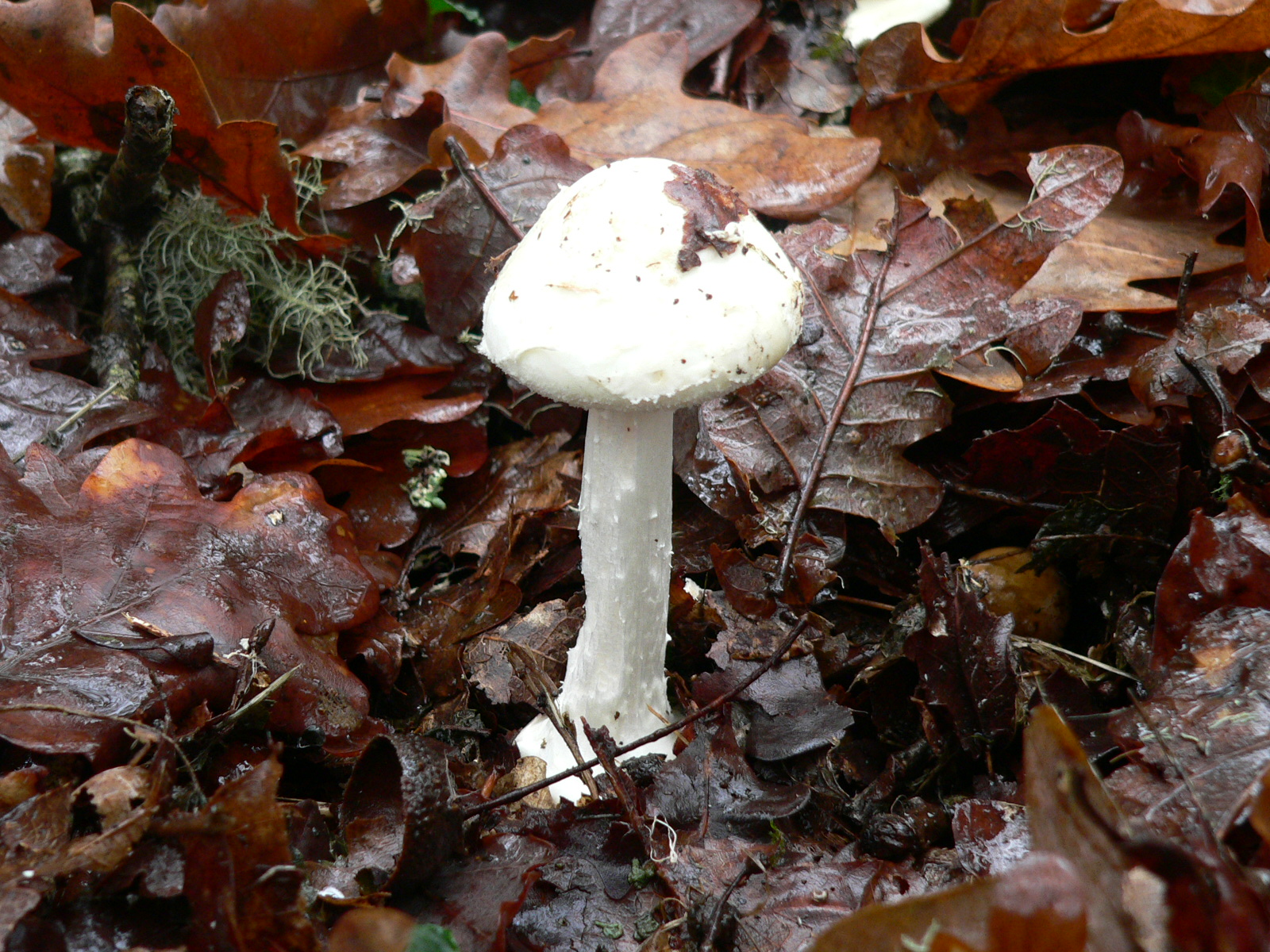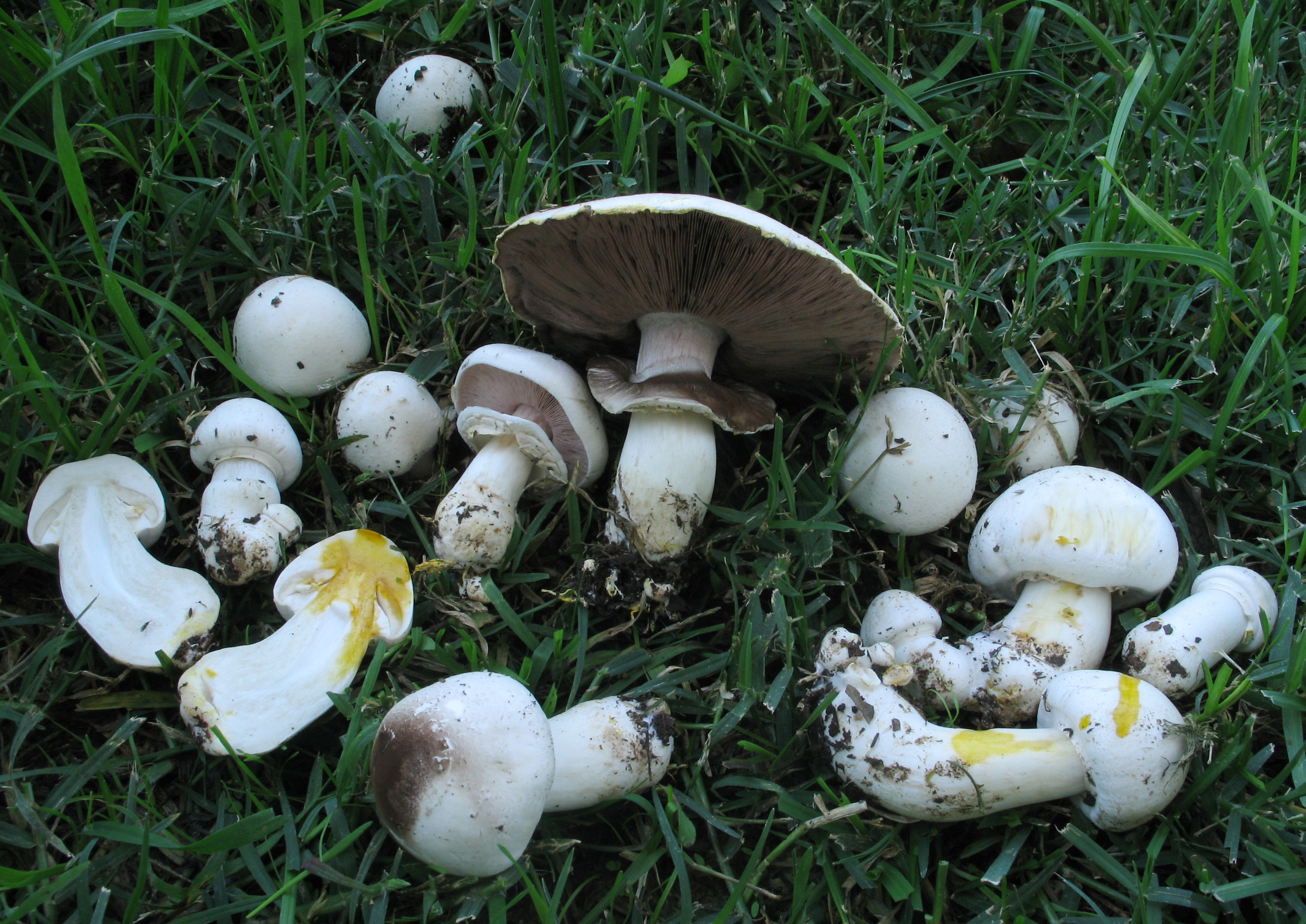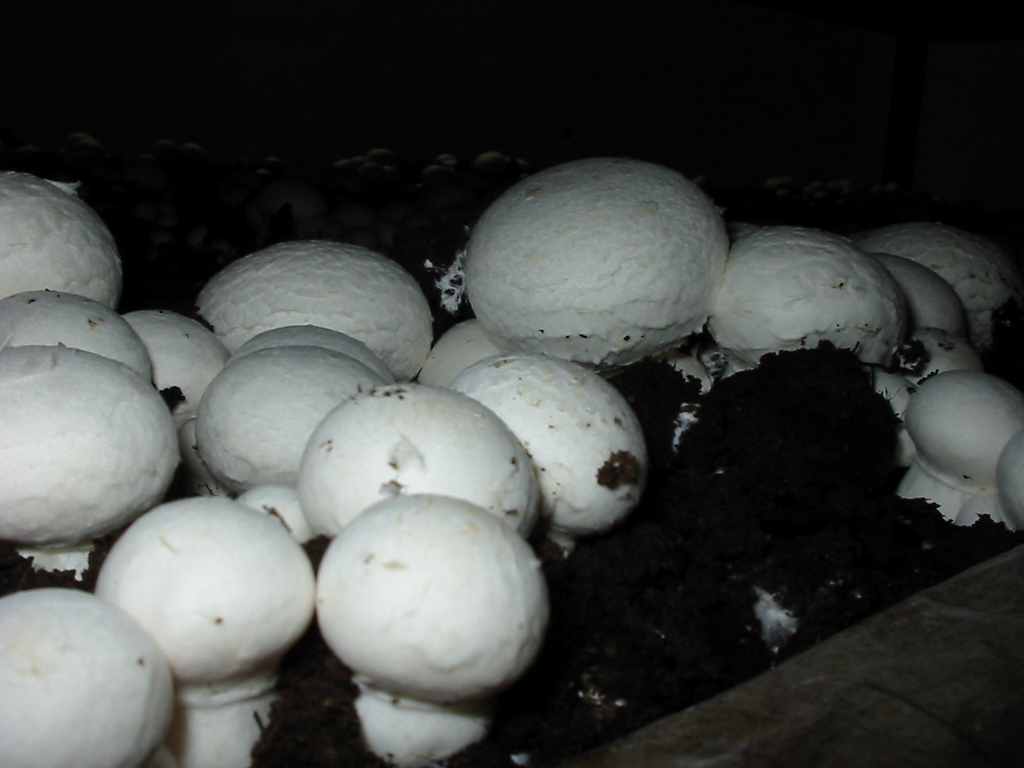|
Agaricus Californicus
''Agaricus californicus'', commonly known as the California agaricus, is a poisonous mushroom in the section ''Xanthodermati'' of the genus ''Agaricus''. It is mildly poisonous, causing gastrointestinal upset in many individuals. The etiology of these symptoms is unclear and some individuals can eat it without experiencing symptoms, but since there is no way to tell who can eat the mushroom safely it is generally recommended against. Description The caps are wide, white, sometimes with a grayish-tan center, dry, and either unchanged or yellowing slightly when bruised. The stalk is long and 1–2 wide, perhaps larger at the base. The spores are brown and smooth. Differentiating ''A. californicus'' ''Agaricus californicus'' is similar in general appearance to many other ''Agaricus'' species, especially to ''A. arvensis'', ''A. bisporus'', ''A. campestris'', ''A. cupreobrunneus'', and which are commonly collected for the table. Since ''A. californicu ... [...More Info...] [...Related Items...] OR: [Wikipedia] [Google] [Baidu] |
Charles Horton Peck
Charles Horton Peck (March 30, 1833 – July 11, 1917) was an American mycologist of the 19th and early 20th centuries. He was the New York State Botanist from 1867 to 1915, a period in which he described over 2,700 species of North American fungi. Biography Charles Horton Peck was born on March 30, 1833, in the northeastern part of the town Sand Lake, New York, now called Averill Park. After suffering a light stroke early in November 1912 and then a severe stroke in 1913, he died at his house in Menands, New York, on July 11, 1917. In 1794, Eleazer Peck (his great grandfather) moved from Farmington, Conn. to Sand Lake, NY attracted by oak timber that was manufactured for the Albany market. Later on, Pamelia Horton Peck married Joel B., both from English descent, and became Charles Peck parents (Burnham 1919; Atkinson 1918). Even though his family was rich and locally prominent, his education was provincial (Haines 1986). During his childhood, he used to enjoy fishing and h ... [...More Info...] [...Related Items...] OR: [Wikipedia] [Google] [Baidu] |
Agaricus Cupreobrunneus
''Agaricus cupreobrunneus'', commonly known as the brown field mushroom, is an edible mushroom of the genus ''Agaricus''. Description The brown cap is wide with flattened reddish-brown fibrils. The white stalk is tall and 1–2 cm wide. The spores are dark brown, elliptical, and smooth. Distribution and habitat ''Agaricus cupreobrunneus'' tends to fruit in disturbed areas and grassy places, such as lawns, pastures, and roadsides. It can fruit by itself, gregariously, or in fairy rings. Edibility ''Agaricus cupreobrunneus'' is edible and good. Its taste is comparable to that of ''Agaricus campestris'', but it is comparatively lacking in texture. ''A. cupreobrunneus'' is not currently cultivated on a widespread basis, but is commonly eaten by collectors in the areas in which it grows. It does not contain the carcinogen agaritine, which appears in many other members of the genus ''Agaricus''. Similar species ''Agaricus cupreobrunneus'' is similar in general appearance ... [...More Info...] [...Related Items...] OR: [Wikipedia] [Google] [Baidu] |
Fungi Described In 1895
A fungus ( : fungi or funguses) is any member of the group of eukaryotic organisms that includes microorganisms such as yeasts and molds, as well as the more familiar mushrooms. These organisms are classified as a kingdom, separately from the other eukaryotic kingdoms, which by one traditional classification include Plantae, Animalia, Protozoa, and Chromista. A characteristic that places fungi in a different kingdom from plants, bacteria, and some protists is chitin in their cell walls. Fungi, like animals, are heterotrophs; they acquire their food by absorbing dissolved molecules, typically by secreting digestive enzymes into their environment. Fungi do not photosynthesize. Growth is their means of mobility, except for spores (a few of which are flagellated), which may travel through the air or water. Fungi are the principal decomposers in ecological systems. These and other differences place fungi in a single group of related organisms, named the ''Eumycota'' (''true fungi' ... [...More Info...] [...Related Items...] OR: [Wikipedia] [Google] [Baidu] |
Fungi Of California
A fungus ( : fungi or funguses) is any member of the group of eukaryotic organisms that includes microorganisms such as yeasts and molds, as well as the more familiar mushrooms. These organisms are classified as a kingdom, separately from the other eukaryotic kingdoms, which by one traditional classification include Plantae, Animalia, Protozoa, and Chromista. A characteristic that places fungi in a different kingdom from plants, bacteria, and some protists is chitin in their cell walls. Fungi, like animals, are heterotrophs; they acquire their food by absorbing dissolved molecules, typically by secreting digestive enzymes into their environment. Fungi do not photosynthesize. Growth is their means of mobility, except for spores (a few of which are flagellated), which may travel through the air or water. Fungi are the principal decomposers in ecological systems. These and other differences place fungi in a single group of related organisms, named the ''Eumycota'' (''true fungi' ... [...More Info...] [...Related Items...] OR: [Wikipedia] [Google] [Baidu] |
List Of Agaricus Species
''Agaricus'' is a genus of mushrooms containing both edible and poisonous species, with over 400 members worldwide and possibly again as many disputed or newly-discovered species. The genus includes the common ("button") mushroom (''Agaricus bisporus'') and the field mushroom ('' A. campestris''), the dominant cultivated mushrooms of the West. Members of ''Agaricus'' are characterized by having a fleshy cap or pileus, from the underside of which grow a number of radiating plates or gills, on which are produced the naked spores. They are distinguished from other members of their family, Agaricaceae, by their chocolate-brown spores. Members of ''Agaricus'' also have a stem or stipe, which elevates it above the object on which the mushroom grows, or substrate, and a partial veil, which protects the developing gills and later forms a ring or annulus on the stalk. The genus contains the most widely consumed and best-known mushroom today, '' A. bisporus'', with '' A. arvensis'', ... [...More Info...] [...Related Items...] OR: [Wikipedia] [Google] [Baidu] |
Sodium Hydroxide
Sodium hydroxide, also known as lye and caustic soda, is an inorganic compound with the formula NaOH. It is a white solid ionic compound consisting of sodium cations and hydroxide anions . Sodium hydroxide is a highly caustic base and alkali that decomposes proteins at ordinary ambient temperatures and may cause severe chemical burns. It is highly soluble in water, and readily absorbs moisture and carbon dioxide from the air. It forms a series of hydrates . The monohydrate crystallizes from water solutions between 12.3 and 61.8 °C. The commercially available "sodium hydroxide" is often this monohydrate, and published data may refer to it instead of the anhydrous compound. As one of the simplest hydroxides, sodium hydroxide is frequently used alongside neutral water and acidic hydrochloric acid to demonstrate the pH scale to chemistry students. Sodium hydroxide is used in many industries: in the manufacture of pulp and paper, textiles, drinking water, soaps and deterge ... [...More Info...] [...Related Items...] OR: [Wikipedia] [Google] [Baidu] |
Agaricus Xanthodermus
''Agaricus xanthodermus'', commonly known as the yellow-staining mushroom or simply the yellow-stainer, is a mushroom of the genus ''Agaricus'', which displays a strong yellow colouration at the base of the stem when cut. It is poisonous for most people, causing gastrointestinal upset, but can be eaten by some without apparent negative effect. Taxonomy This species was first officially defined under the name ''Agaricus xanthodermus'' in 1876 by Léon Gaston Genevier, in a letter published in the bulletin of the French Botanical Society. Genevier described the ''Agaricus'' mushrooms commonly eaten (perhaps sometimes inadvisedly) in the region of Nantes, and attempted to clarify the distinctions between them. He proposed a detailed reclassification into 5 species, including this new one. Apparently up until that time, these yellow-staining mushrooms were considered to be just varieties of other species which are edible: '' A. arvensis'', A. edulis', and '' A. silvi ... [...More Info...] [...Related Items...] OR: [Wikipedia] [Google] [Baidu] |
Trama (mycology)
In mycology, the term trama is used in two ways. In the broad sense, it is the inner, fleshy portion of a mushroom's basidiocarp, or fruit body. It is distinct from the outer layer of tissue, known as the pileipellis or cuticle, and from the spore-bearing tissue layer known as the hymenium. In essence, the trama is the tissue that is commonly referred to as the "flesh" of mushrooms and similar fungi.Largent D, Johnson D, Watling R. 1977. ''How to Identify Mushrooms to Genus III: Microscopic Features''. Arcata, CA: Mad River Press. . pp. 60–70. The second use is more specific, and refers to the "hymenophoral trama" that supports the hymenium. It is similarly interior, connective tissue, but it is more specifically the central layer of hyphae running from the underside of the mushroom cap to the lamella or gill, upon which the hymenium rests. Various types have been classified by their structure, including trametoid, cantharelloid, boletoid, and agaricoid, with agaricoid the ... [...More Info...] [...Related Items...] OR: [Wikipedia] [Google] [Baidu] |
Agaricus Campestris
''Agaricus campestris'' is a widely eaten gilled mushroom closely related to the cultivated button mushroom ''Agaricus bisporus''. It is commonly known as the field mushroom or, in North America, meadow mushroom. Taxonomy This species was originally noted and named in 1753 by Carl Linnaeus as ''Agaricus campestris''. It was placed in the genus ''Psalliota'' by Lucien Quelet in 1872. Some variants have been isolated over the years, a few of which now have species status, for example, ''Agaricus bernardii'' Quel. (1878), ''Agaricus bisporus'' (J.E. Lange) Imbach (1946), '' Agaricus bitorquis'' (Quel.) Sacc. (1887), ''Agaricus cappellianus'' Hlavacek (1987), and ''Agaricus silvicola'' (Vittad.) Peck (1872). Some were so similar they did not warrant even varietal status, while others have retained it. ''Agaricus campestris'' var. ''equestris'' (F.H.Moller) Pilat (1951) is still valid. ''A. campestris'' var. ''isabellinus'' (F.H.Moller) Pilat (1951), and ''A. campestris'' ... [...More Info...] [...Related Items...] OR: [Wikipedia] [Google] [Baidu] |
Section (biology)
In biology a section ( la, sectio) is a taxonomic rank that is applied differently in botany and zoology. In botany Within flora (plants), 'section' refers to a ''botanical'' rank below the genus, but above the species: * Domain > Kingdom > Division > Class > Order > Family > Tribe > Genus > Subgenus > Section > Subsection > Species In zoology Within fauna (animals), 'section' refers to a ''zoological'' rank below the order, but above the family: * Domain > Kingdom > Phylum > Class > Order > Section > Family > Tribe > Genus > Species In bacteriology The International Code of Nomenclature for Bacteria The International Code of Nomenclature of Prokaryotes (ICNP) formerly the International Code of Nomenclature of Bacteria (ICNB) or Bacteriological Code (BC) governs the scientific names for Bacteria and Archaea.P. H. A. Sneath, 2003. A short histor ... states that the Section rank is an informal one, between the subgenus and species (as in botany). References Botanical no ... [...More Info...] [...Related Items...] OR: [Wikipedia] [Google] [Baidu] |
Agaricus Bisporus
''Agaricus bisporus'' is an edible basidiomycete mushroom native to grasslands in Eurasia and North America. It has two color states while immature – white and brown – both of which have various names, with additional names for the mature state. ''A. bisporus'' is cultivated in more than seventy countries and is one of the most commonly and widely consumed mushrooms in the world. Names When immature and , this mushroom may be known as: * common mushroom * white mushroom * button mushroom * cultivated mushroom * table mushroom * champignon ( French for mushroom) When immature and , it may be known variously as: * Swiss brown mushroom * Roman brown mushroom * Italian brown mushroom * cremini/crimini mushroom * chestnut mushroom (not to be confused with '' Pholiota adiposa'') * baby bella When marketed in its mature state, the mushroom is brown with a cap measuring . This form is commonly sold under the names portobello, portabella, or portobella; the etymology is dispute ... [...More Info...] [...Related Items...] OR: [Wikipedia] [Google] [Baidu] |
Agaricus Arvensis
''Agaricus arvensis'', commonly known as the horse mushroom, is a mushroom of the genus ''Agaricus''. Taxonomy It was species description, described as ''Agaricus arvensis'' by Jacob Christian Schaeffer in 1762, and given numerous binomial descriptions since. Its specific name arvensis means 'of the field'. Description The pileus (mycology), cap is , whitish, smooth, and dry; it stains yellow, particularly when young. The gills are pale pink to white at first, later passing through grey and brown to become dull chocolate. There is a large spreading ring, white above but sometimes with yellowish scales underneath. Viewed from below, on a closed-cap specimen, the twin-layered ring has a well-developed 'cogwheel' pattern around the stipe. This is the lower part of the double ring. The stalk is long and 1–3 cm wide. The spores are brown and smooth. The odor is described as like anise. It belongs to a group of ''Agaricus'' which tend to stain yellow on bruising. Similar sp ... [...More Info...] [...Related Items...] OR: [Wikipedia] [Google] [Baidu] |





